How Jammu & Kashmir became one unit under Dogra Rule; A glance at the History
| 08-Sep-2020 |
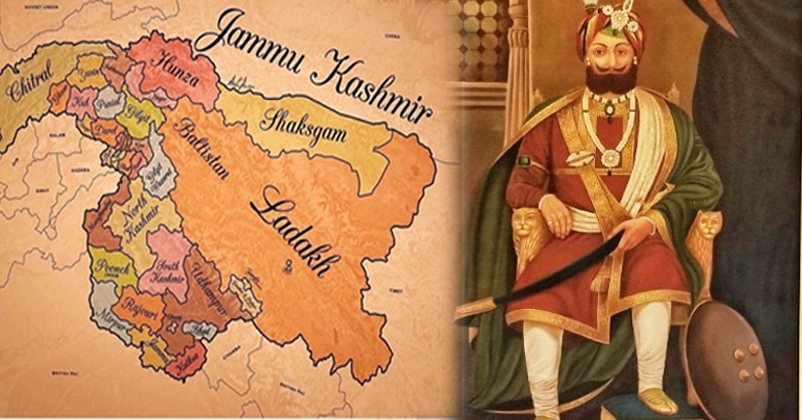
After India got Independence in 1947, the political class in Jammu and Kashmir often tried hard to downplay the contribution of Dogra dynasty vilifying the warriors from the royal house, but Maharaja Hari Singh, the last Dogra ruler of the erstwhile state is considered as an icon among the youth in the region. People from the Dogra community in Jammu-Kashmir and around take pride in the legacy and part of their forefathers in shaping Jammu and Kashmir, that it is today. Dogras, under the able military leadership of Gulab Singh and General Zorawar Singh established the Jammu and Kashmir kingdom by extending its boundaries up to the border of Russia in the North and Tibet in the East, and remained as the largest princely state in British India up to 1947, when India attained freedom. Dogra dynasty ruled Ladakh, Gilgit-Baltistan, Muzaffarabad-Mirpur, Aksai Chin, and Saksham valley and were de facto rulers of feudatories like Hunza and Nagar. However, with the Partition of 1947 began dismantling of the legacy of Maharaja Gulab Singh, and soon after when Pakistani invaders forcibly occupied the region of Gilgit-Baltistan and Mirpur, Muzaffarabad the proud achievements of the Dogra dynasty receded to the pages of history, but yet, undoubtedly, Dogra rulers are the most known and remembered figures in the valley owing to the fact that the royal history of these warriors is intertwined with Kashmir’s past, present, and future.
The Jia Pota Ghat on the right bank of the mighty Chenab at Akhnoor is today considered a major centre of pilgrimage for urban youth, as it is the place where in the shadow of the Akhnoor Fort, Maharaja Ranjit Singh applied Raj Tilak to the Dogra General Gulab Singh and anointed him the Raja of Jammu on 16 Jun 1822. And with that day itself, Maharaja Gulab Singh, the founder of Jammu and Kashmir and an ambitious warrior began to mark his conquests, from Jammu to the valley of Kashmir, then Ladakh and Tibet. Gulab Singh began his journey as a sepoy in the army of Maharaja Ranjit Singh of Punjab and rose to the ‘Maharaja of J&K’ by annexing Kashmir and parts of Tibet in his territory.
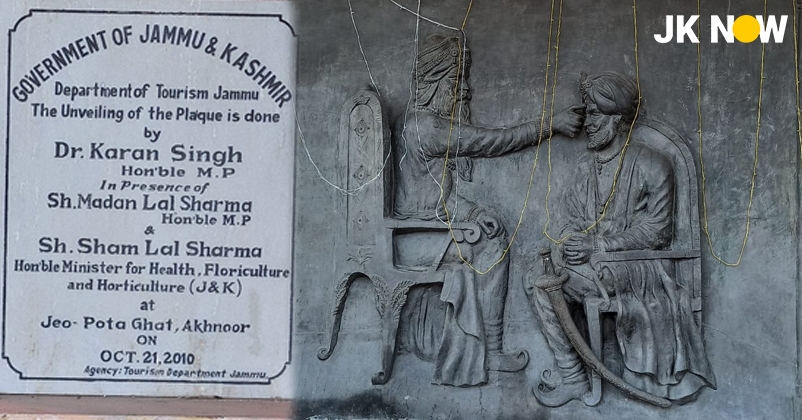
The Jia Pota Ghat on the right bank of the mighty Chenab at Akhnoor
The coronation glory at the Jio Pota Ghat would thus always remain inscribed in the collective psyche of the people of this region and more particularly the Dogras because it was the first concrete step towards the foundation of the modern Jammu and Kashmir. Statues of Maharaja Hari Singh, General Zorawar Singh, Gulab Singh, and Ranbir Singh grace various parts of Jammu along with other national heroes. Dogra dynasty and its legendary history is a source of inspiration for the youth and a reminder of their purpose and responsibility towards J&K as well as the nation. Although, several places associated with the erstwhile Dogra dynasty were converted into hotels or commercial places with time, what remains intact is the fact that it were these warriors of the Dogra dynasty who built the erstwhile state with their blood, sweat, and toil and kept it unified and prosperous for 100 long years.
Gulab Singh – The undefeated ambitious warrior
When Kashmir was ruled by Afghanis, Jammu was ruled by Dogras. The king of Jammu, Raja Ranjeet Singh was a very brave and influential ruler. After the fall of the Mughal empire, Maharaja Ranjeet Singh conquered 22 small Dogra principalities and established Jammu as a vast and prosperous state. When oppressed by the last Afghan Subedar Jabbar Khan's inhuman atrocities, a Kashmiri Pandit Beerbal Dhar appealed to Maharaja Ranjeet Singh of Punjab to save them from the havoc of Afghans, he also handed over him some important information about the Army of Afghan Subedar and promised to help him. Although, prior to it, the troops of Maharaja Ranjeet Singh had unsuccessfully invaded Kashmir in 1812 and 1814 but the Sikh Army led by Misar Deewan Chand, the commander of Maharaja Ranjeet Singh defeated Jabbar Khan in the battle of Sophia on July 15, 1819. After that, Sikhs ruled Kashmir for 27 years.
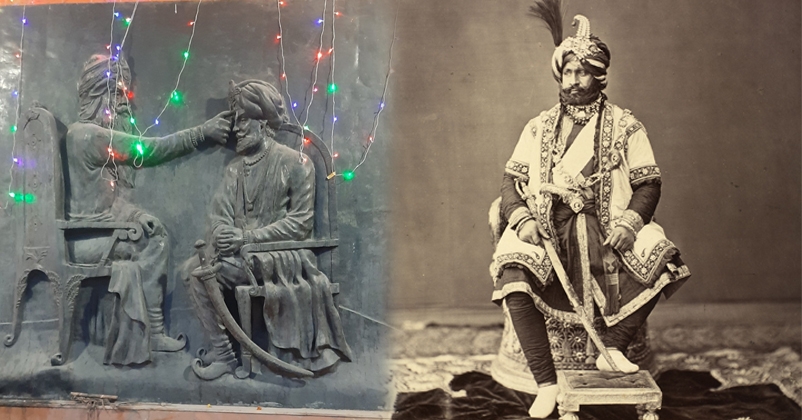
Raja Gulab Singh's Coronation
The first half of the 19th century witnessed the fall of the Gurkhas, the Marathas, and the Jats while battling the British for supremacy. In the year 1808, the Dogra ruler of Jammu was defeated by the Sikhs. Gulab Singh, who was associated with the lineage of Ranjeet Deo, joined the Army of Maharaja Ranjeet Singh. After his brave performance in many battles, the Maharaja appointed him as the ruler of Jammu. In 1821, Gulab Singh conquered Rajauri and Kistwad and merged it into his kingdom. He also helped in merging Dera Ghazi Khan in the Sikh empire. He participated in the Shaidu's battle in support of Hari Singh Nalwa, the Sikh ruler, and suppressed the revolt of Afghanis. Maharaja Ranjeet Singh was so impressed by his services that he provided him the provinces of Bhera, Jhelum, Rohtas, and Gujarat. Meanwhile, Gulab Singh, as a king, also conquered the fort of Mangala.
In the year 1834, General Jorawar Singh, the commander of Gulab Singh, conquered a large part of Ladakh including Janskar and Baltistan. In 1839, after the death of Maharaja Ranjeet Singh, his successors could not sustain their influence and consequently were defeated by the Britishers. The Britishers took control of Punjab but accepted Maharaja Gulab Singh as the ruler in a large area in the north of Satluj.
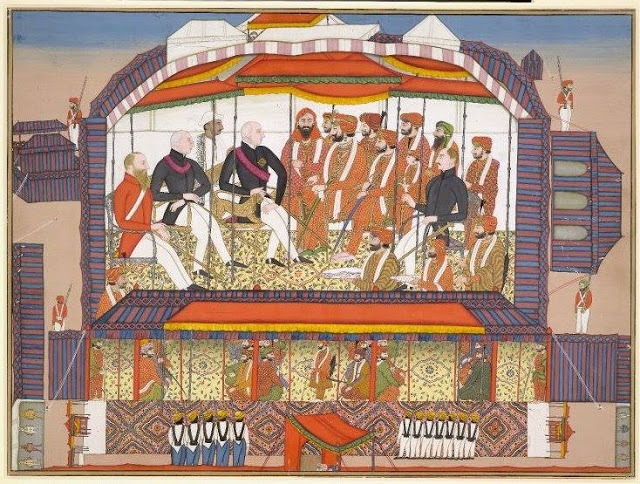
Raja Gulab Singh negotiating with British
It was in these adverse circumstances that the farsightedness and flexibility of Raja Gulab Singh came to the fore. Unlike earlier examples, he did not seek reprisals even as he re-established control over Leh and accepted the limits of his ambition. In 1841, during an adventurous campaign of occupying Tibet, while facing a snowstorm, a big part of the Dogra Army was destroyed. Jorawar Singh along with a large number of soldiers died. After the death of Jorawar Singh, the joint armies of China and Tibet marched towards Ladakh, but this army was very bravely resisted by Mehta Basti Ram, till the arrival of another troop under the leadership of Deewan Harichand and Wazeer Ratnu. Finally, when cornered effectively by the Dogra troops, the army of China and Tibet ran away. The Dogra troops also chased them for long. In the battle of Chushul, the Chinese army was defeated, and its commander was killed. As a result, both the parties entered into a treaty signed at Chushul in 1842. An agreement was signed between the representatives of both states, according to which both the parties agreed not to encroach into the other's area, and thus the borders of Dogra and Tibet were fixed. It was agreed that the traditional boundary between Tibet and Ladakh would be respected and trade would follow the traditional route between Lhasa and Leh, opening up new trade interests for the Jammu kingdom. For the next 120 years, that's where the boundaries of Ladakh remained, notwithstanding the fact that the border regions of such lands were inhabited by peregrinating populations for whom cultural identities were stronger than political ones.
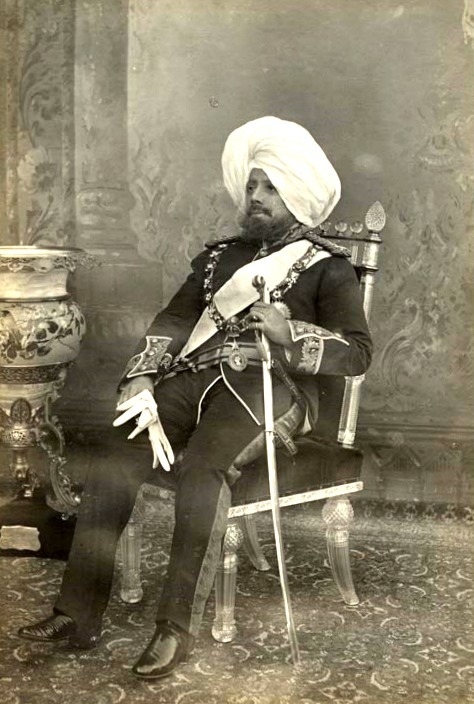
Maharaja Pratap Singh (12 Sep, 1885- 23 Sep 1925)
Beyond Ladakh
While conquering Ladakh, Raja Gulab Singh looked westward towards Baltistan, for Tibet and brought it under his control in 1840, laying the foundation of future expansion by his successor to take control of the trade routes to Kashgar (Xinjiang) and central Asia. It must be said that Kashmir did not figure in his plans since it was part of the Sikh empire. However, a combination of circumstances, which generated a lot of heat and dust, made him acquire it after paying the indemnity that the Lahore Durbar was unable to pay. In 1846, the journey of a soldier in the Sikh army reached its pinnacle with the Treaty of Amritsar between him and East India Company, bestowing upon him the title of Maharaja.
After the defeat of Sikhs, two different accords were signed. In the first accord was signed on March 9, 1846, under which the Sikhs had to give Rs 1.5 crore as compensation. Since they were unable to arrange such a large amount, they surrendered a large part of their state, including Kashmir valley, to the British. Another Accord was signed on March 16, 1846, which is known as Amritsar Accord, according to which in exchange of 75 lakh compensation given by the British, the Chamba area of Himachal Pradesh and the entire Kashmir valley was given to Gulab Singh permanently.
The East India Company preferred to keep Gulab Singh in power and maintained good relations with him instead of facing the local resistance, Gulab Singh eyed on expanding his empire, even if it came by paying some amount outsmarting the British. It needs to be noted here that all this process was based on a written agreement and not at all on any sale deed, contrary to what politicians in J&K falsely claimed over the years to vilify the Dogra dynasty. And this way, while Jammu, Ladakh, Gilgit, Baltistan etc. were already under Gulab Singh's empire, Kashmir valley and some areas of Himachal Pradesh too were successfully added in this through the signed agreement.
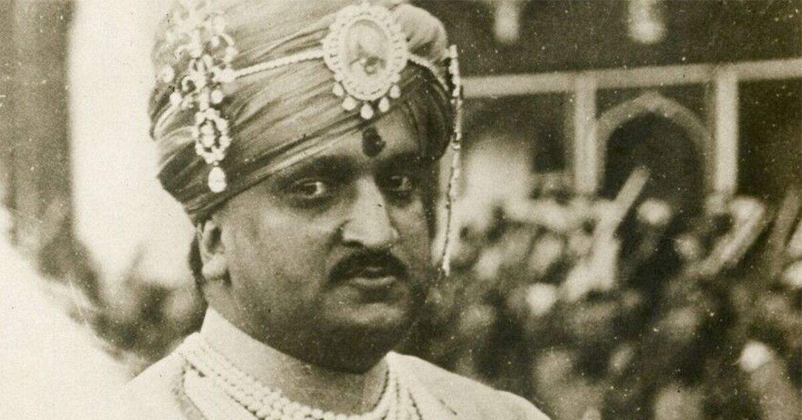
Maharaja Hari Singh (Sep, 1925- June 1949
When in 1925 Hari Singh ascended the throne
After Gulab Singh, Maharaja Ranveer Singh became the king. After him, his son Pratap Singh assumed the power. On September 23, 1925 Maharaja Hari Singh, the nephew of Maharaja Pratap Singh, became the king of Jammu & Kashmir. And his reign saw several progressive measures taken for the welfare of the masses. His main focus remained on the empowerment of women, education, health, and outlawed untouchability. Among other reforms ushered by Hari Singh was strengthening the Jammu and Kashmir Tenancy Act 1923 introduced by the earlier administration. He ensured that the landless peasant population of Kashmir got their due. Hari Singh also wanted to restructure the state bureaucracy to improve governance. With this purpose in mind, he started to import bureaucrats from other parts of British India especially Bengal. The British, too, were happy to see the reforms. Hari Singh’s rule as the Maharaja was terminated in June 1949 and thus the 106-year-old dynasty came to an end. Hari Singh died in Bombay on 26 April 1961. Though Hari Singh’s only son Dr. Karan Singh, later on, served as the President of J&K, he abdicated mostly owing to his brand of politics that was influenced by India’s first Prime Minister Jawaharlal Nehru, much to the dislike of Hari Singh.
Since the 2008 Amarnath land agitation, the young generation has come to know about the life and legacy of their forefathers and this has led to a political awakening among the people. Youth are turning pages of history to study and discuss glorious days of the Dogra empire as hundreds now participate in the events organized in his memory. It has also brought the Rajput community together.
Recently, NCERT has included a chapter on the Dogra regime of Jammu and Kashmir. The chapter on Dogra rule will be taught in the 8th-grade history book. A picture of Dogra ruler Maharaja Gulab Singh has also been published in the book. Many social organizations of Jammu believe that the chapter now included in the schoolbooks on Dogra rule of Jammu will give the coming generations, information about the Dogra culture and history which till now they received only from their elders.
(Ina Siwach, the writer is a digital media professional having an experience of 10 Years in broadcast & digital)